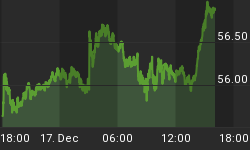"Those who cannot remember the past are condemned to repeat it" ~ Vol 1, Reason in Common Sense, George Santayana
After major multiyear bear market lows of 1843, 1861, 1878, 1932, 1938 & 1974 that saw declines of -45% to -89%, the market had an initial explosive 2-3 year bull moves of around 100%. Greater than 60% bear markets, the advance was around 150%. After that, no matter what the valuations or improved economic conditions, markets transitioned to a volatile multi-year range bound phase that will favour different investment strategies than simple buy and hold coming out of the low.
Let's look at 5 and compare it to the current outlook.
1. After the 1835-42 - 60% bear market, the stocks surged 95% for 2 years (1843-45), then went sideways for 7 years until 1852, when after a false breakout, led to another 5 year -70% bear market.

2. After the 1857 -70% bear market low, the market chopped in a base for 4 years, then surged for 3 years when the inflationary civil war broke out. It then meandered up for 7 years

3. 1872-1877 -50% bear market, is then followed by the 1878-1881 bull market fuelled by the railroad building boom as capital poured into the us from Europe causing a +150% bull move. After that peak, the market meandered down for 15 years.

4. After the great depression decline of -89%, the market surged off the lows, and then chopped down for a couple more years, surged again in 1935-1936, before retracing all the way back to 1933 levels. The market range was capped for 19 years between 1931 & 1950

5. Out of the -50% 1973-74 bear market and generational low valuations, the market surged almost 100% in 2 years, before meandered up for the next volatile 6 years that included 3 bear markets and for good measure an "October massacre" of 1978.

6. Bull move out of March 2009 to carry into mid-2011? 100% move off 666 is 1330 s&p

The point of this exercise is to determine whether we are at the cusp of something big on the upside in the years ahead or something different. History of bull markets following greater than 50% bear markets - that usually indicates structural damage of some kind for which equilibrium must be restored and the lessons of the prior secular bull must be unlearned. In past 6 such bear markets back to 1835, the market has rallied about 100% in the first 2-3 years, then meandered sideways in volatile activity while it waits for the system to delever and repair structural damage. This implies that 90% of the bull market is complete pricewise, and sometime next year will morph into a volatile multiyear trading range that absorbs aftershocks from 2008 generational event.
Framing the last century in context of decade long cycles of ebbing between the need to manage risk, and flowing, when risk should be embraced and setbacks only lead to higher highs. When adjusted for the rising value of money (deflation) and the falling value of money (inflation) we get a perspective of when equities have been a store of value or a cost to wealth. As such, from the chart below we see 16 to 20 year periods when equities adjusted for CPI generally decline. Those periods include 1903-1921, 1929-1949, 1966-1982, and the latest period beginning in 1999. While deflation adjusts the price upward, its generally harder on the absolute stock prices than inflation which hurts the real value but inflates the absolute levels of the indexes.
















